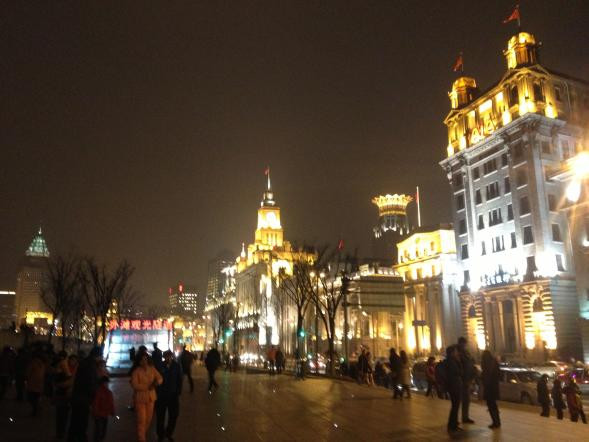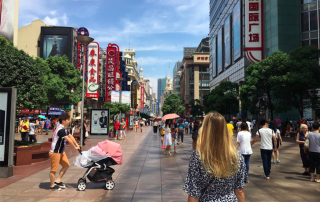10 Shanghai Must-Sees Your Tour Guide Didn't Tell You About
Shanghai off the Beaten Track
So you’ve been to the Bund for a mandatory skyline picture and fought the crowds at Yu Gardens and Tianzifang. You strained your neck looking at the skyscrapers in Lujiazui, dutifully marched through five floors of bronzes and ceramics at Shanghai Museum and pretended to understand contemporary art at M50. So what next? It’s sometimes said that business-centric Shanghai lacks traditional “tourist sites” for a city its size; after all, it doesn’t have as many museums or temples as Beijing or the natural setting and long history of Hangzhou. But if you’re willing to go out and explore (and even occasionally leave the comfort of the Xuhui/Jing’an bubble), we can guarantee you’ll never be bored here.
- Propaganda Poster Art Center
Basement of Building B, No.868 Huashan Road; Changshu Road Station, Line 1/7 or Shanghai Library Station, Line 10
Daily, 10:00 am- 5:00 pm
Chinese name: 上海场培明宣传画收藏艺术馆
Chinese address: 华山路868号B号楼
This “mini-museum” in the basement of an apartment building started out as the personal collection of the owner (who is usually on site and speaks good English). It features an incredibly extensive and well-preserved collection of Chinese propaganda posters from the Republican Period, WWII, the Maoist campaigns of the 1950s-1970s and the post-1980 Reform Era. This is a unique way to experience the ups and downs of China’s twentieth-century history through mass-produced art.
- South Xizang Road Bird and Flower Market
No.417, Xizang South Road near Dongtai Rd;Laoximen Station, Line 8/10
Daily, 8:00 am -5:30 pm
Chinese name:万商花鸟市场
Chinese address:西藏南路417号
Get ready for an experience you won’t find at home! Just when you thought Shanghai was becoming too Westernized, in steps the South Xizang Road Bird and Flower Market. This type of traditional market is fast disappearing, and this is the only one of its kind left in central Shanghai. Not only can you find all kinds of birds and plants, but also various insects (check out the fighting crickets), fish, turtles, and more. A fascinating look into another culture…just leave your ideas about animal rights at the door.
- Laoximen Lane Neighborhood
The area of lane houses and alleys to the east of Laoximen Station, to the north and south of Middle Fuxing Road.
Chinese name: 老西门里弄
Chinese address: 复兴中路,近中华路
Once you’re done with the bird and flower market, take a look around the old lǐlòng 里弄, or traditional lane houses, of Laoximen. This is the oldest neighborhood in central Shanghai and used to be part of the walled “Chinese city” of pre-1949 Shanghai (as opposed to the foreign concessions). However, this important link to Shanghai’s past has been slated for redevelopment. Large parts have already been torn down and most of it will likely be gone within the next few years, so go check it out now while you still can. In a city full of high rises and shopping malls, these small alleys create a strong sense of community and traditional lifestyle that is becoming increasingly rare in Shanghai.
- Fengyun Zaiqi Game Center
B1/F, No. 221 Renmin Da Dao near Wusheng Road; People’s Square Station, Line 1/2/8
Daily, 10:00 am -12:00 am
Chinese name: 风云再起动漫体验中心
Chinese address: 人民大道221号迪美购物中心B1层(近武胜路)
Shanghai’s weather isn’t always the most cooperative, from the winter smog to the June plum rains, to the unbearable summer heat. If you’re looking for some indoor fun, you might consider button-mashing your way to victory over your friends (or total strangers) in blissful ignorance of the weather or time of day. Located in a sprawling mall underneath People’s Square, the Fengyun Zaiqi Game Center is big, clean, and full of middle schoolers more than ready to hand your ass to you in a variety of DDR-esque games. There’s also fighting games, racing sims, guitar and drum games, shooters, and of course claw machines where you can win plush toys of every conceivable cartoon and anime character.
- Aomen Road Muslim Market
Corner of Aomen Road and Changde Road; Changshou Road Station, Line 7/13
Every Friday 11:00 am-3:00 pm
Chinese name: 澳门路清真集市
Chinese address:常德路/澳门路(路口)
China is an incredibly diverse country, and while not traditionally associated with Islam, Muslims have lived in China for 1,400 years. In fact, China contains 10 different Muslim ethnic groups and over 23 million Muslims with their own cultures and languages distinct from that of the Han Chinese majority. If don’t have time to visit Xinjiang or Gansu, you can get a “taste” of China’s Muslim culture right here in Shanghai every Friday morning. Located close to the Huxi Mosque, this is a great place to taste fresh, delicious and affordable Halal delicacies like baked flatbread, sour yogurt, layer cakes, lamb dumplings, lamb kebabs and rice pilaf with, you guessed it, lamb! It’s also a great place to stock up on dried fruits and nuts.
- People’s Square Marriage Market
North end of People’s Square, Gate #5, near People’s Square Station exit 9
Saturdays and Sundays, noon until late afternoon
Chinese name: 人民广场相亲角
Chinese address: 人民广场5号门口
This extremely Chinese institution is not quite what it sounds like. Surprisingly, you’re unlikely to meet many singles here but rather their well-meaning/overbearing/desperate parents, equipped with a “marriage CV” for their unmarried adult child (usually taped to an umbrella) complete with height, weight, age, salary, home/car ownership details and residence registration…basically all the essentials you need to pick a life partner. Even if you’re not “on the market”, it’s still worth checking out to see one version of how marriage works in China.
You can also check out our previous blog article for a deeper dive into the marriage market.
- Koreatown
Scattered throughout the Gubei area of Western Shanghai, but centered around Seoul Plaza at No. 1000 Hongquan Road, accessible from Hechuan Road Station, Line 9 or Longbai Xincun Station, Line 10.
Chinese name (Seoul Plaza): 井亭大厦
Chinese address: 虹泉路1000号

Why you would want to visit Shanghai’s Koreatown during your trip to China is a valid question. I could tell you that Koreans are in fact one of the 55 officially recognized ethnic minorities of China with a long history here (mostly in the Northeast). Or that Koreans are by far the most numerous of Shanghai’s foreign nationalities with deep ties to the city. I might even bring up the profound influence that Korean Wave pop culture, fashion, and cuisine has had on 21st century China. But if I’m honest, the truth is much simpler: namely that fried chicken, barbequed meat, kimchi pancakes and pork bone soup are delicious and that enjoying them in large quantities with friends (and lots of soju) is a truly life-affirming experience. And that the best place to do so is where the city’s resident Koreans do, namely in Gubei’s Koreatown.
- West Bund
For now, most of the activity is centered around the Long Museum West Bund at No. 3398 Longteng Avenue; Middle Longhua Road Station, Line 7.
Chinese name (Long Museum West Bund): 龙美术馆(西岸馆)
Chinese address: 龙腾大道3398号

This former industrial docklands area is rapidly becoming one of Shanghai’s hippest and most livable neighborhoods. With big stretches of well maintained green spaces, a breezy riverside promenade with segregated running/walking paths, viewing platforms, public basketball courts and rock walls, the West Bund is already one of the city’s best public spaces. Add onto that China’s biggest (and probably most Insta-worthy) private art museum (one of the more than half dozen museums that will eventually make up a “museum mile”) and it’s easy to see why this area has become a magnet for picnickers, dog walkers, photographers, skateboarders, runners and people watchers.
- Shanghai Jewish Refugees Museum
No. 62 Changyang Road, Tilanquiao Station, Line 12
Chinese name: 上海犹太难民纪念馆
Chinese address: 长阳路62号
Daily, 9:00 am- 5:00 pm
This small museum in Hongkou is a fascinating look into the history of Shanghai’s little known Jewish past. In the lead up to WWII, European Jews found themselves persecuted at home and denied entry into nearly every country in the world. They fled to Shanghai in large numbers as it was one of the few places that did not require a visa to enter. Housed in a former synagogue that used to be the center of Shanghai’s Jewish Quarter (and later the Jewish Ghetto) the museum tells the story of the nearly 25,000 stateless Jewish refugees who called Shanghai home during the 1930s and 1940s.
10. 1984 Bookstore
No. 11 Hunan Road, near Wukang Road, Shanghai Library Station, Line 10
Daily, 10:00 am- 8:00 pm
Chinese address: 湖南路11号
This hard to find bookshop and cafe is a rarity in Shanghai. Nestled in the courtyard of a traditional French Concession lane house, its two rooms are populated with a mix of expats, locals, and cats almost as eclectic as the objects and books surrounding them. The highlight, however, is the serene courtyard and the laid back and non-consumerist vibe of the whole place.
We hope you enjoyed our list of 10 lesser-known places to go in Shanghai! Let us know in the comments your favorites and which ones we missed!
Looking for more China travel trips? Check out our previous articles on the best places to visit in mainland China and the top cities for foreign students in China.
And if you’re ready to come experience Shanghai (or Beijing/Hangzhou) for yourself, check out our options for internships, volunteer programs, and Chinese language study today!